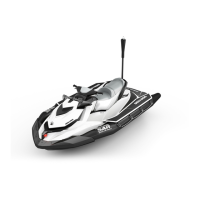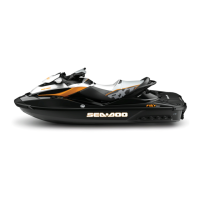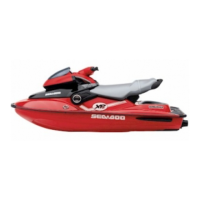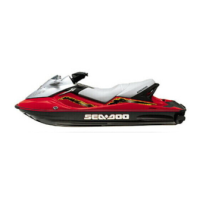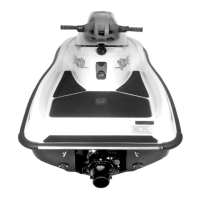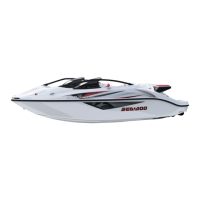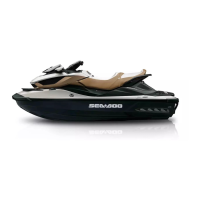SPECIAL SAFETY MESSAGES
Operator and Passenger Awareness
Read and understand all safety labels
on the Sea-Doo PWC, the Operators
Guide, all other safety documents, and
watch the
SAFETY DVD
before operat-
ing the PWC.
Respect applicable laws. Check local
and federal boating laws applicable
to the waterways where you intend
to use your watercraft. Learn the lo-
cal navigation rules. Know and under-
stand the applicable navigation system
(suchasbuoysandsigns).
Remember that sun, wind, fatigue or
illness may impair your judgement and
reaction time.
Operation of this PWC by a person un-
der 16 years of age, or a person with a
disability that impairs vision, reaction
time, judgment, or operation of the
controls is NOT recommended.
Always use the tether cord when oper-
ating the watercraft and ensure that all
passengers are familiar with its use.
Ensure that any operator and all pas-
sengers know how to swim and how
to re-board the PWC from the water.
Boarding in deep water can be stren-
uous. Practice in chest-deep water
before operating or embarking your
watercraft in deep water. If a passen-
ger does not know how to swim, en-
sure that passenger wears a PFD at all
times and take extra precautions when
boating.
Never turn handlebar when someone
is near the rear of watercraft. Keep
away from steering moving parts (noz-
zle, reverse gate, linkages, etc.).
Do not start the engine or operate the
watercraft if anyone is in the water
nearby, or near the rear of the water-
craft.
The operator and passenger(s) should
be properly seated and have a firm
handhold before starting the water-
craft, and at all times when the wa-
tercraft is in motion. All pass
enger(s)
shouldbeinstructedtousethehand-
holds or seat strap provided, or to
hold the waist of the person in front of
them. Each passenger must be able to
simultaneously place both feet firmly
flat against each footwell when prop-
erly seated.
WhenacceleratingonaPWCwitha
passenger(s), whether from a com-
plete stop or while underway, always
do so progressively. Fast acceleration
may cause your passenger(s) to loose
their balance and fall rearward off the
watercraft. Make sure that your pas-
senger(s)are aware of or cananticipate
any rapid acceleration.
Keep away from the intake grate while
the engine is on. Items such as long
hair, loose clothing, or PFD straps can
become entangled in moving parts.
Severe internal injuries can occur if
water is forced into body cavities as a
result of falling into water or being near
a jet thrust nozzle. Consequently, the
wearingofawetsuitbottomishighly
recommended.
Before reboarding, make sure engine
is off and tether cord is removed.
To prevent accidental starting, always
detach the tether cord from the engine
cut-off switch when swimmers are
boarding or nearby, or during removal
of any weeds or debris from the intake
grate.
On a PWC, never place your feet and
legs in the water to aid turning.
Operation by Minors
Minors should always be supervised
by an adult whenever operating a wa-
tercraft. Laws regarding the minimum
age and licensing requirements of mi-
nors may vary from one jurisdiction to
another. Be sure to contact the local
boating authorities for information re-
garding the legal operation of a PWC in
the intended jurisdiction of us
e. BRP
recommends a minimum operator age
of 16 years old.
________
SAFETY INF
ORMATION
________
11
